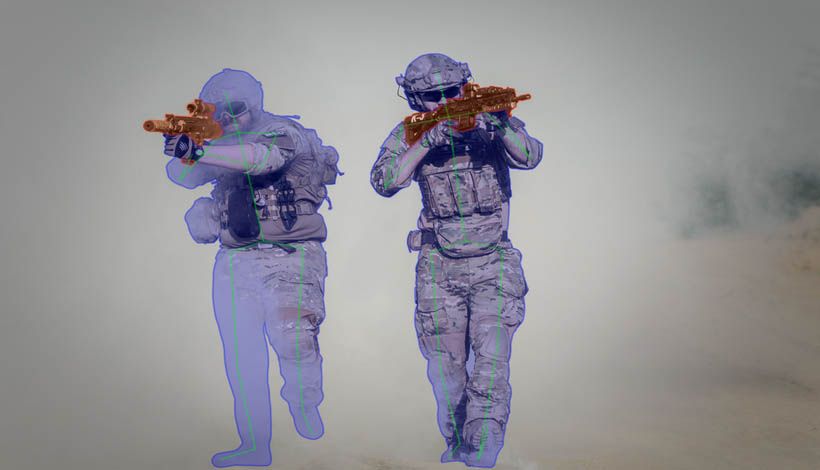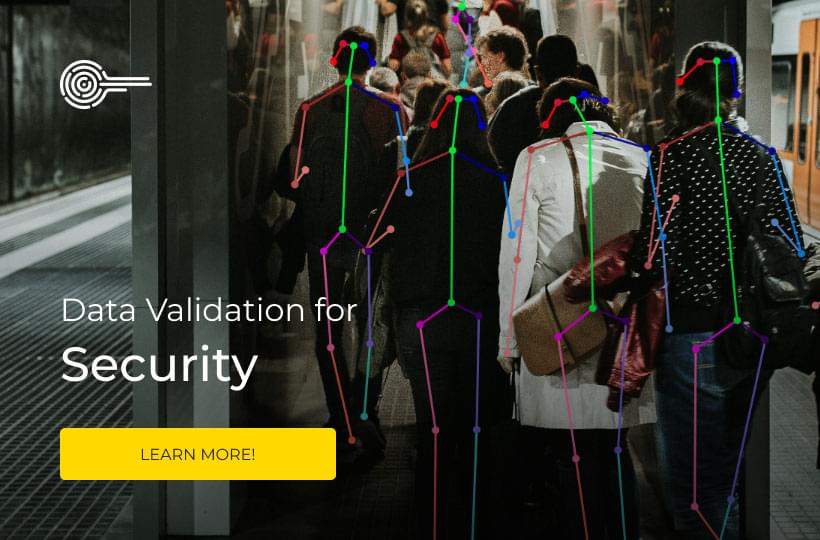Data Annotation for Military AI Applications

Computer vision based AI models are being deployed in military contexts. The use of AI in weapon systems is a complex and controversial area, the practical and moral implications of which are still being debated by thought leaders and policy makers.
However, AI powered military technology is increasingly being harnessed in order to protect service personnel operating in potentially dangerous situations and environments. By carrying out tasks that would ordinarily require risks to human life military AI applications are helping to protect soldiers and civilians alike.
In order to interpret and function well within complex, dynamic environments military computer vision systems require varied and responsive image and video training data. This blog will focus on three use cases for this technology and show how annotation techniques and professional annotation services can support innovators and streamline development.

Interpreting surveillance imagery with AI
Drones now form the backbone of the majority of military surveillance operations. Remotely piloted vehicles can gain vital battlefield intelligence without endangering human pilots. However, drones and other forms of surveillance now produce enormous quantities of visual data.
This data has the potential to overwhelm intelligence gathering and interpretation, leading to important information slipping through the net. Computer vision programs are being developed that can sort through this mountain of data and alert intelligence personnel to the presence of strategically important objects or individuals.
Data annotation for aerial imaging requires attention to detail and identifying a large amount of relevant details in images featuring many different objects. Experienced annotators employ polygons for irregular shape detection. This process can be used for large scale satellite imagery or be carried out frame by frame in drone video data.
Safe removal of landmines using robots
Landmines left behind after conflicts lead to thousands of deaths and injuries every year. Safely removing these devices remains a difficult challenge but developments in machine learning for computer vision are promising to increase detection and reduce threats to military personnel and civilians. Autonomous robotic vehicles have shown the ability to detect mines with a high rate of accuracy. These machines can be deployed globally to clean up minefields without endangering human operators.
This technology relies on thousands of annotated images of covered or or partially covered images to form the training data. Quality control is essential for this kind of high stakes AI system. Professional annotation services, like Keymakr, provide higher levels of quality control and management to ensure that the data for safety orientated AI projects remains precise.

Autonomous military vehicles
Autonomous vehicles can keep soldiers out of harm's way on the ground in chaotic and dangerous situations. These machines are capable of navigating rough terrain and urban environments, allowing them to clear areas of debris and scout out potential threats. In a supporting role autonomous military vehicles can also bring supplies to soldiers on the front line and help transport wounded personnel out of harm's way.
Self-driving vehicles in military contexts do not need to adhere to rules of the road or safe driving practices in the same way as autonomous vehicles for civilian use. However, training data for military applications must reflect the diverse and complex environments present in many contemporary combat spaces.
Autonomous military vehicles may be required to identify obstacles that do not appear on ordinary roads. This puts pressure on data collection for training. It can often be difficult to assemble datasets that accurately reflect non-typical environments. Professional data annotation services are often able to alleviate this burden by providing bespoke images, annotated to fit the specific needs of unusual projects.

Experienced annotation providers support cutting-edge AI projects
Keymakr makes use of proprietary annotation tools to create image and video training data that is precise and affordable.



